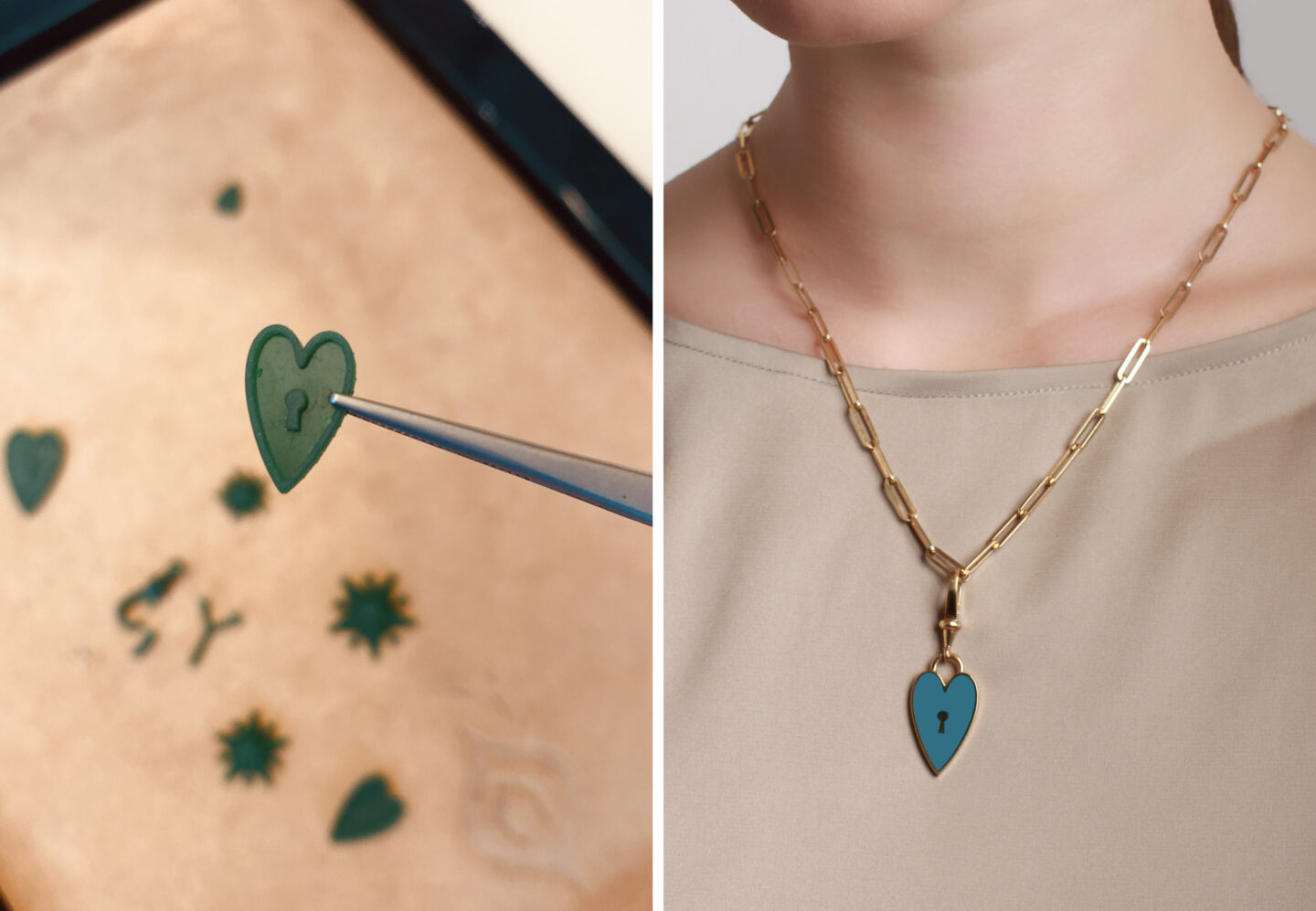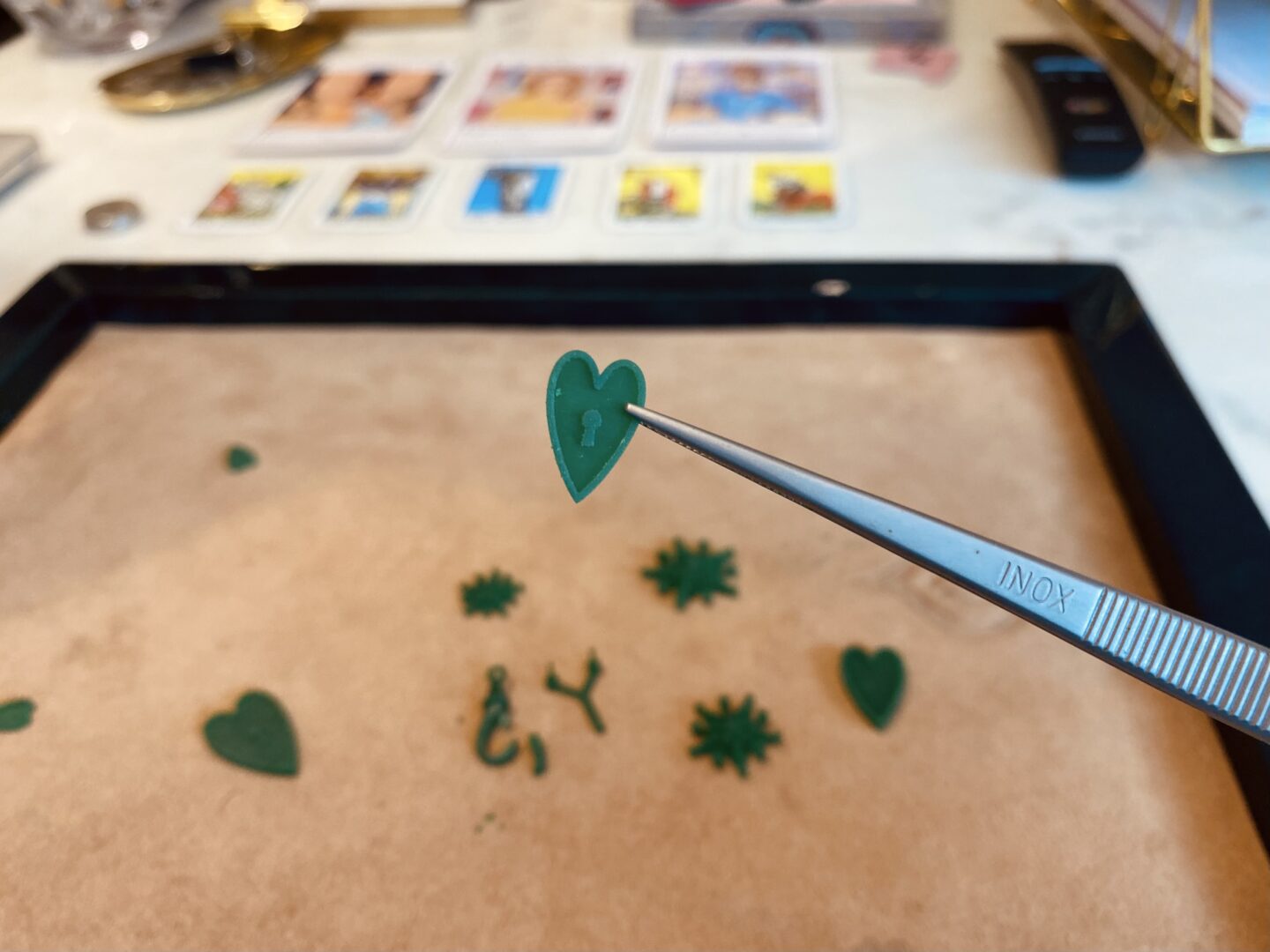
During my time with L’Ecole des Arts Joailliers I was introduced to hand carving of wax models, where the artisan carves the wax directly into the wax model for gold casting. This process is very special, it takes time and unbelievable accuracy and patience, if you make a mistake, there’s no going back. When sketching any new piece, in my mind I have a clear picture of its dimensions, finishing, fit, and where it would sit on the skin. However, very often, what I see in my imagination can turn out very different from reality in terms of volume, and I cannot count the number of times I had to start a piece all over again before I started working with wax models for volumes.
Prototyping can be a costly process, depending how soon you get your piece right. I realized earlier in the game that some of the main questions a prototypes answers for me are: Is the size right? Does it sit in the correct place? Does the shape complement the place where it is worn? Is the shape comfortable to wear? and so on. As you can imagine, these questions can never be answered with a drawing, not by hand nor 3D; they need to be touched, felt, and experienced.
At first, I modeled things on paper and foam, I spent time cutting out edges and folding corners into the shape of the jewel I envisioned, I would then take that paper model with me to the 3D designer in the factory and let him or her experience the dimensions and shape and see it before translating it onto the computer.
That was a tiresome process,
..and there were shapes that were nearly impossible to create with folding paper
..So, I decided to invest in a 3D printer, and a curing machine in-house that enables me to create as many reiterations of the design as needed with minimum delay time. Now, this process is integral to every new design we create.


Once the volume testing is completed and everyone is happy, the final detailed wax is created. This one usually would have all the detailed grooving inside and outside that enables it to be a master wax which can be used for casting. This makes the casting process so much easier and faster.

Here, you can see the curing process.. Once the wax is printed, the models are placed inside this oven-like device called a curing box, and is cleaned using specific chemicals.

Now, looking back, I wouldn’t have done it any other way. I wait eagerly by the printer to see what the piece would look like. Sometimes you’d see me walking out of the office wearing a ring made of wax, and I would wear it for the next 2-3 days or until it cracks (they are really fragile) and this becomes part of the R&D for that specific design. If it survives the questions of comfort, reasonable/practical volume; the design would see the light — if it doesn’t, then it goes back to square 1 of the design and development process and through the same process until we reach a the final aspired outcome.